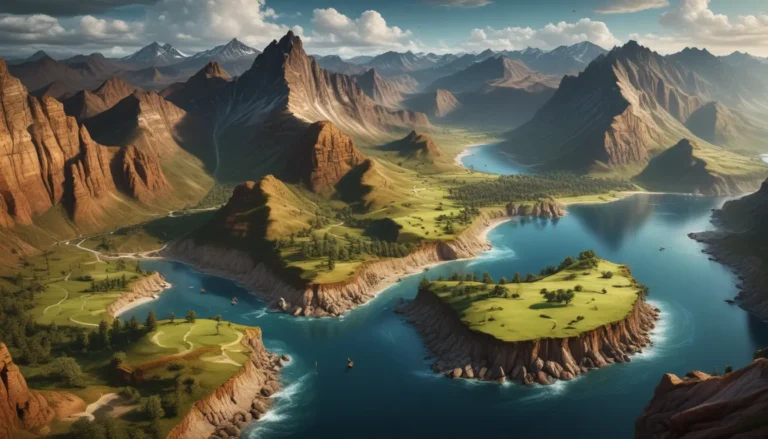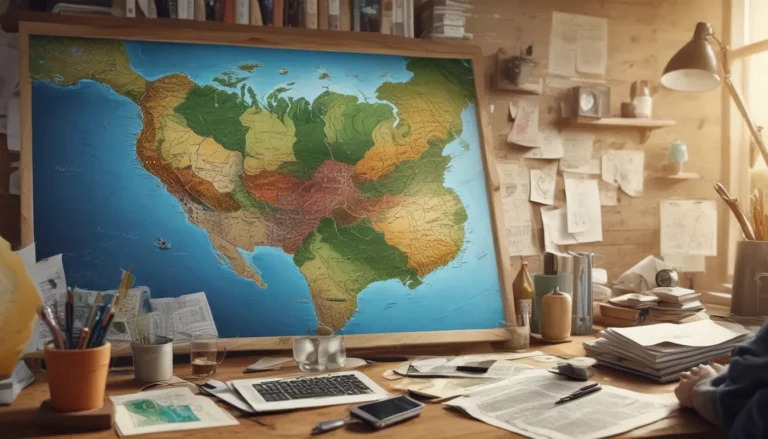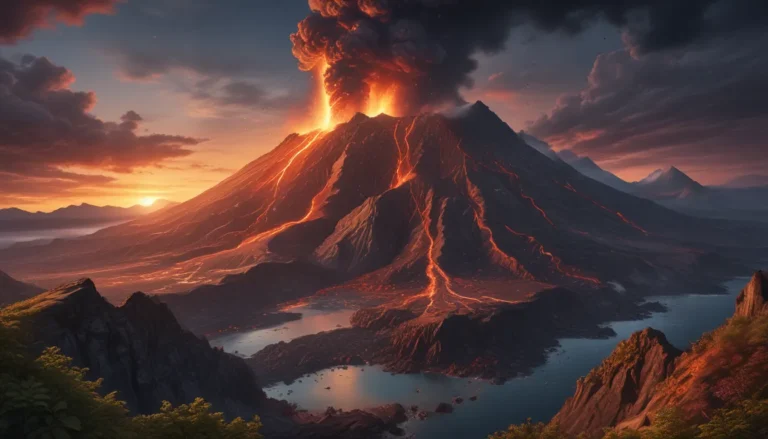A Note About Images: The images used in our articles are for illustration purposes only and may not exactly match the content. They are meant to engage readers, but the text should be relied upon for accurate information.
Political borders and conflicts have played a significant role in shaping human history, impacting nations and individuals worldwide. From ancient territorial disputes to modern-day conflicts, these boundaries symbolize division, identity, and power dynamics between nations. In this article, we will explore 12 intriguing facts about political borders and conflicts that shed light on the complex dynamics of international relations. From the longest disputed border to ongoing conflicts like the Israel-Palestine issue, we will delve into compelling stories from various regions of the world.
Unveiling Fascinating Facts About Borders and Conflicts
Explore the world of political borders and conflicts through these key takeaways:
- The world’s longest international border stretches over 5,525 miles between Canada and the United States, symbolized by the Peace Arch Monument.
- The Berlin Wall stood as a physical division between East and West Berlin during the Cold War, representing the ideological divide.
- The dispute over Kashmir between India and Pakistan has lasted for decades, resulting in multiple wars and ongoing tensions.
- The Falkland Islands conflict between Argentina and the United Kingdom in 1982 showcased a battle for sovereignty.
- The Israel-Palestine conflict remains one of the most complex in the world, centered on disputes over land and self-determination.
- The division of Germany during the Cold War emphasized the political and physical separation of East and West Germany.
- The India-China border dispute highlights ongoing tensions and conflicts over territorial claims.
- The Troubles in Northern Ireland underscored a period of conflict between unionists and nationalists, ending with the Good Friday Agreement.
- The ongoing conflict in Syria has led to significant displacement, border disputes, and international involvement.
- The Cyprus dispute since 1974 remains unresolved, with efforts to find a peaceful solution.
- The tension between Russia and Ukraine over Crimea exemplifies the complexities of modern geopolitical conflicts.
Exploring Historical and Ongoing Border Disputes
The Longest International Border: Canada and the United States
The border between Canada and the United States, stretching over 5,525 miles, represents a longstanding symbol of peaceful coexistence and cooperation between neighboring nations. The Peace Arch Monument in Washington stands as a reminder of the strong relationship between the two countries, transcending territorial disputes.
The Legacy of the Berlin Wall
The construction of the Berlin Wall in 1961 marked a stark division between East and West Berlin, reflecting broader ideological differences during the Cold War era. The physical barrier not only separated families and communities but also symbolized the deep-rooted political tensions between communist and capitalist ideologies.
The Kashmir Dispute: India and Pakistan
The dispute over Kashmir, a region in South Asia, has been a contentious issue between India and Pakistan since the partition of British India in 1947. Multiple wars and ongoing tensions have characterized the conflict, with both nations claiming sovereignty over the region, leading to a protracted struggle for territorial control.
The Falkland Islands Conflict: Argentina and the United Kingdom
In 1982, Argentina’s invasion of the Falkland Islands, a British Overseas Territory, ignited a 74-day conflict with the United Kingdom. The military engagement highlighted the sovereignty dispute over the islands and underscored the complexities of territorial claims in the modern era.
The Israel-Palestine Conflict: A Tale of Borders and Identities
The Israel-Palestine conflict is rooted in a long and complex history of competing claims to the same land. With issues surrounding borders, settlements, and self-determination at the forefront, the conflict continues to shape the geopolitical landscape of the Middle East, challenging notions of sovereignty and identity.
The Divided Germany: East and West
Following World War II, Germany was divided into East and West Germany, with the Berlin Wall serving as a physical and ideological barrier between the two states. The reunification of Germany in 1990 marked the end of the division, symbolizing a new chapter in European history and unity.
The India-China Border Dispute: Strained Relations
The ongoing border dispute between India and China along the Line of Actual Control has been a source of tension and conflict for both nations. Incidents along the border have strained diplomatic relations and highlighted the complexities of territorial claims in the region, shaping the strategic landscape of Asia.
The Troubles in Northern Ireland: A Struggle for Peace
The Troubles in Northern Ireland from the late 1960s to the late 1990s reflected deep-seated tensions between unionist and nationalist communities. The Good Friday Agreement in 1998 paved the way for peace and reconciliation, bringing an end to decades of conflict and division in the region.
The Syrian Conflict: Border Disputes and Humanitarian Crises
The ongoing conflict in Syria since 2011 has led to significant border disputes, displacement of populations, and international intervention. The civil war has created a humanitarian crisis, with implications for neighboring countries and global security, underscoring the complexities of modern conflicts.
The Cyprus Dispute: Seeking a Path to Peace
Since the Turkish military invasion in 1974, Cyprus has remained divided, with a UN-controlled buffer zone separating the island. Efforts to find a peaceful resolution to the conflict continue, emphasizing the importance of dialogue, cooperation, and mutual understanding in resolving longstanding territorial disputes.
The Russia-Ukraine Tension Over Crimea: A Modern Geopolitical Challenge
The annexation of Crimea by Russia in 2014 sparked a major conflict with Ukraine, highlighting the complexities of geopolitical rivalries and territorial disputes in the region. The unresolved status of Crimea continues to strain relations between the two countries, underscoring the challenges of modern border conflicts in a globalized world.
Embracing a Deeper Understanding of Borders and Conflicts
Political borders and conflicts offer unique insights into the complexities of our global society, encompassing a diverse range of historical, geographical, and political factors. By unraveling the intricacies of these boundaries, we can gain a deeper appreciation for the impact of borders on identities, histories, and aspirations of nations and individuals.
As we delve into the intriguing aspects of political borders and conflicts, we are reminded of the interconnectedness of geography, politics, and culture in shaping international relations. Through studying border disputes, historical conflicts, and the evolving dynamics of modern conflicts, we engage with a rich tapestry of human experiences that challenge our perceptions of national boundaries and divisions.
Exploring Frequently Asked Questions
Q: What is a political border?
A: A political border is a demarcation line that separates one country from another, defining territorial boundaries and jurisdiction.
Q: What are common causes of border conflicts?
A: Border conflicts can arise from territorial disputes, historical grievances, ethnic tensions, economic interests, or political ideologies, each with unique complexities.
Q: How are border disputes resolved?
A: Border disputes can be resolved through diplomatic negotiations, international mediation, legal arbitration, or military intervention, depending on the circumstances and parties involved.
Q: Are there peaceful resolutions to border conflicts?
A: Peaceful resolutions to border conflicts are possible through diplomacy, treaties, and compromises that consider the interests of all parties involved in the conflict.
Q: How do border conflicts impact affected communities?
A: Border conflicts can disrupt communities, impede economic activities, strain social relations, and lead to displacement, violence, and loss of life, highlighting the human cost of territorial disputes and conflicts.
In conclusion, the exploration of political borders and conflicts reveals the intricate interplay of historical legacies, geopolitical tensions, and human experiences that define our understanding of international relations. By delving into the complexities of these issues, we not only gain valuable insights into the challenges and opportunities faced by nations but also foster dialogue, empathy, and a shared commitment to peace and cooperation in a diverse and interconnected world.






